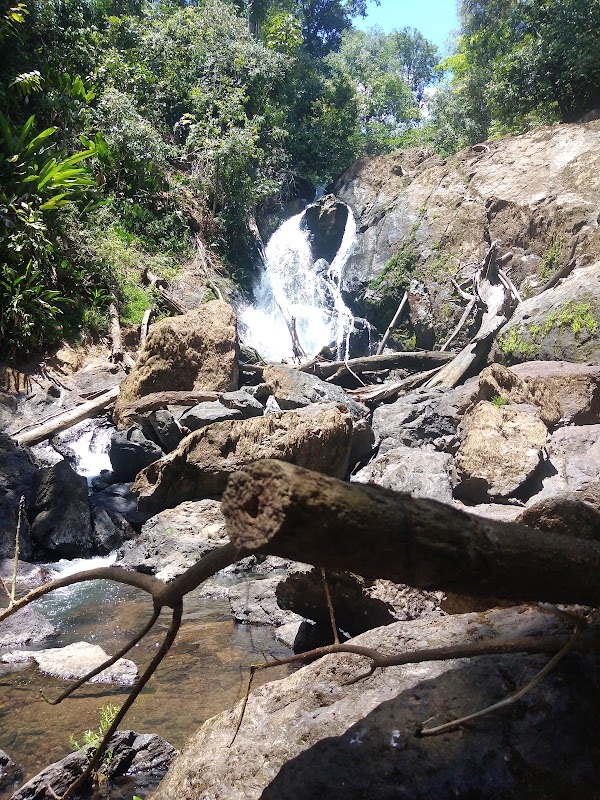Eco-Friendly Adventures and Wildlife Watching in Corcovado National Park, Costa Rica
Corcovado National Park offers an unparalleled eco-adventure on Costa Rica’s Osa Peninsula. Hike challenging trails through dense rainforest while watching rare wildlife in a reserve committed to environmental preservation and responsible tourism.
Prepare for Muddy Terrain
Expect slippery roots and muddy patches, especially if you've visited outside the dry season. Wear waterproof hiking boots with good traction to maintain steady footing.
Carry Water Purification
Natural water sources are plentiful but untreated. Bring a reliable water filter or purification tablets to keep hydrated safely throughout your hike.
Book a Knowledgeable Guide
Guides enhance safety and increase your chances of spotting elusive wildlife by recognizing subtle signs and calls unique to Corcovado's dense jungle.
Start Early to Avoid Heat and Maximize Sightings
Trails cool down early morning, and animal activity peaks at dawn and dusk. Plan hikes to coincide with these hours to conserve energy and enjoy better wildlife encounters.
Eco-Friendly Adventures and Wildlife Watching in Corcovado National Park, Costa Rica
Corcovado National Park stands as one of the most biologically intense places on Earth, challenging you with raw tropical wilderness that thrives fiercely on its own terms. Covering around 424 square kilometers on Costa Rica’s Osa Peninsula, this park invites adventurers to experience true rainforest immersion through well-maintained but rugged trails. The Sirena Ranger Station hike, a flagship route, runs roughly 24 kilometers one-way with moderate elevation gains up to 500 meters, threading you through dense primary forest, tide-touched beaches, and river crossings that push your pace.
Each step is a conversation with the forest. Leaves drip with moisture, while toucans and scarlet macaws dart between branches, their calls urging you forward. Rivers dare you to test their currents, and mud slicks offer slippery reminders that nature leads here. The trails range from firm dirt paths to uneven roots and occasional muddy stretches, demanding sturdy footwear and steady footing.
The best time to explore Corcovado falls between December and April, during the dry season when trail conditions improve and wildlife sightings peak. Still, the rainforest’s heartbeat never stops—occasional rain drizzles keep the ecosystem alive year-round, so quick-drying clothing and rain gear remain essential.
Water sources through the park are abundant but untreated, so bringing purification tools is a must. Hydration beats fatigue, especially when confronting steep inclines or navigating muddy terrain. Expect to spend full days on hikes that can range from 6 to 10 hours, with guides recommended not just for safety but also for their expert eye on elusive wildlife like tapirs, jaguars, and howler monkeys.
Wildlife watching rewards persistent eyes and patience. Beyond the big mammals, smaller creatures like glass frogs, poison dart frogs, and countless insect species animate the underbrush. Migratory birds add a seasonal chorus, making each visit a unique auditory and visual experience.
To visit responsibly, adhere strictly to the park’s regulations—minimize noise, avoid feeding animals, and carry out all waste. The park is a living system, fiercely independent, and your role is as a respectful visitor, not a conqueror. This balance ensures Corcovado’s ecosystems and its inhabitants continue to thrive for generations of adventurers.
Whether you are a casual hiker seeking a daily dose of pure rainforest or a seasoned adventurer hungry for complex trails and rare encounters, Corcovado National Park offers an eco-friendly adventure cake layered with challenge, beauty, and deep respect for nature’s sovereignty.
Nearby Trips
All Adventures
Boat Charters
Water Activities
Adventures near Puerto Jiménez
Discover the unique and memorable adventures that make Puerto Jiménez special.
Frequently Asked Questions
Do I need a permit to hike in Corcovado National Park?
Yes, all visitors to Corcovado require a permit issued by the Costa Rican National System of Conservation Areas (SINAC). It's highly advised to book permits and any guided tours well in advance, especially during peak season.
What kind of wildlife can I expect to see?
Expect to see tapirs, scarlet macaws, spider monkeys, and if you’re very fortunate, a jaguar or a puma. Early morning and late afternoon provide the best chances for animal sightings, alongside countless birds, reptiles, and amphibians.
Are the hiking trails suitable for beginners?
While accessible to moderately fit hikers, the trails can be physically demanding with river crossings, slippery terrain, and sections of steep ascent. Beginners should consider shorter trails or joining guided tours with pacing accommodations.
How do I protect myself from insects and tropical diseases?
Use insect repellent containing DEET and wear long sleeves and pants during peak mosquito activity, especially at dawn and dusk. Ensure your vaccinations, like yellow fever, are up to date before arrival.
Are there facilities or lodging inside the park?
Basic facilities exist at ranger stations such as Sirena, including simple sleeping cabins and restrooms. Many visitors also stay in nearby towns, like Puerto Jiménez, and arrange daily hikes.
Can I do wildlife photography here?
Yes, though keep a respectful distance and minimize disturbance. Early morning light and overcast days offer diffused lighting perfect for photographing birds, mammals, and forest scenes.
Recommended Gear
Waterproof Hiking Boots
Protect your feet against mud, water, and uneven terrain while providing ankle support.
Water Filter or Purification Tablets
Ensure safe hydration by treating natural water from streams during long hikes.
Lightweight Rain Jacket
A breathable rain jacket protects against sudden downpours without adding bulk.
Wide-Brimmed Hat
Keeps sun off your face during dry-season hikes, reducing heat stress and sunburn risk.
Local Insights
Hidden Gems
- "La Leona Waterfall viewpoint, offering a less frequented scenic stop."
- "Caño Island Biological Reserve nearby, great for combining snorkeling with jungle treks."
Wildlife
- "Rarely seen mantled howler monkeys"
- "Spectacled caiman near river edges"
- "Brightly colored blue morpho butterflies"
History
"Corcovado was one of the first protected areas in Costa Rica, created in 1975 to preserve the last large remnant of Pacific lowland tropical rainforest. Indigenous peoples once inhabited these lands, with archaeological sites scattered within the park boundaries."

